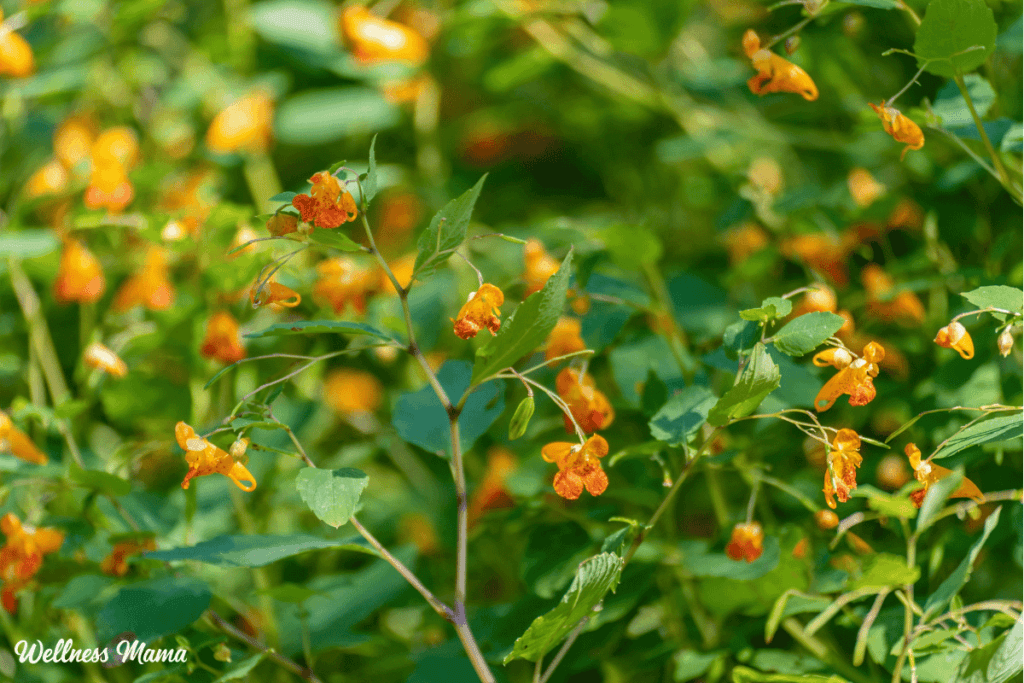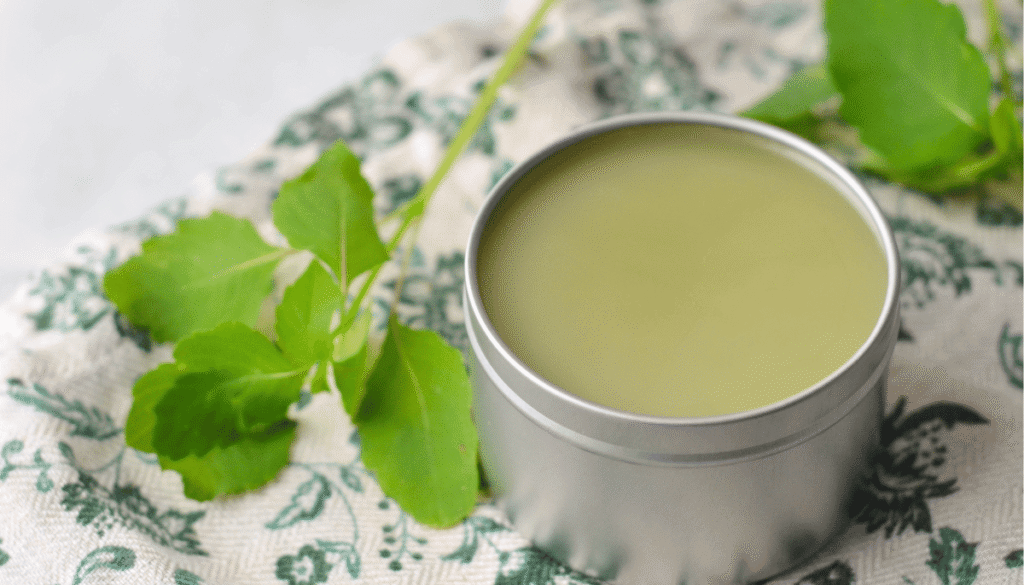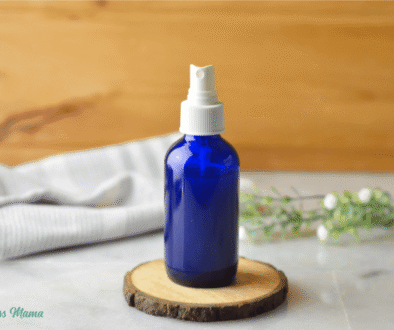DIY jewelry salve for poison ivy (and more!)
[ad_1]
If you have already heard of poison or if you have been the unfortunate dinner of summer mosquitoes, there is a good chance that you desperately have to relieve. And although I like the outdoors and try to enjoy the sun often, sometimes skin irritation occurs. Jewelweed Salve is a popular popular remedy to help Ivy poison and other skin problems and it is easy to do!
Jewelweed is a wild growing plant that trusts generations to soothe skin irritation, calm eczema and keep insect bites from a distance. Although it is better fresh, you can also preserve some of the advantages of DIY DIY.
What is Jewelweed?
Jewelweed, (alias impatient capensis or touch-me-not) is a flowering plant. You will often find it growing up in wet and shaded areas through North America. He prefers growth near water sources, such as streams or wooded trails, often right next to his famous neighbor, Poison Ivy. It has orange flowers and distinct seed pods that “explode”, making it a favorite for children and forahers.
This plant is not only fun to find, it is also filled with powerful natural compounds. Jewelweed in Lawsone, a molecule that researchers believe in competition with Urushiol (oil inducing rashes in poison ivy) for binding sites on the skin. Some research shows that if you rub the jewelry on the skin immediately after a race with Ivy poison, this can stop the rash before the start. Lawon can effectively block Urushiol, reducing or completely preventing a rash. Jewelweed also has saponins, which can act like natural soap and help clean the skin.
Although there are not a ton of studies on the use of Jewelweed, it has a long story of traditional use.
Traditional and modern uses of jewelry
Aboriginal North American tribes have traditionally used jewelry puree plants such as poultice for rashes of poison, burns, cuts, sprains and insect bites. And modern research supports it. The freshly mash mash jewel is a go-to for many when it comes to stopping the poison of its traces. Studies show that jewelry soap can also help reduce the severity of the poison’s ivy if it is used immediately. The soap in general is however good to break the oils in the ivy of poison which causes a rash.
Beyond poisoned plants, jewelry helps to calm the irritated skin, to alleviate eczema and to offer mild anti-inflammatory support. If you plan to go out this summer, it may be useful to have on hand!
If you enter Poison Ivy, the best option is to immediately use fresh jewelry. However, it is not always apparent that you were in Ivy Poison only afterwards! In these cases, a DIY of jewelry DIY can be an excellent way to appease or help prevent the rash. It also works on the bites and the irritated skin. Here’s how to make jewelry balm!
DIY DIY recipe
This salvo DIY calms skin irritation and is perfect for the season of summer insects or when the poison ivy strikes.
Yield: 9 ounces
Oil infusion
-
Put the jewelry in the pint -sized mason jar. You want enough plant material for the pot to be half full.
-
Complete the jewelry with olive oil or coconut oil.
-
Fill a jar halfway with water and place a cotton fabric (like a toilet glove) at the bottom. Put the pot on the fabric (this helps prevent the pot from breaking).
-
Turn the medium low heat and bring the water to simmer. Reduce the fire if necessary for the water to be very hot, but not boiling. Heat the jar in the double boiler over low heat for about 3 hours.
-
Once the oil is completed with jewelry, filter the mixture through a cheese. Give him a good pressure to get the most out of it.
Balm
-
Add 1 cup of oil infused with herbs and the beeswax in the top of a double boiler and heat gently until the wax is founded.
-
Remove from heat and incorporate essential oils and vitamin E if you use.
-
Pour into small glass boxes or jars and let cool completely.
- Also add plantain herbal leaves to oil for additional soothing properties.
- Keep in a cool and dark place. It should last about 6 months if it is stored properly, but throw it away if it starts to appear or feel.
Since dried jewelry lose some of its beneficial properties, I use it fresh in this balm. However, the oil infused with fresh plants is more prone to the cultivation of mold. By doing a heated infusion with the pot of the pot, this allows part of the additional humidity to evaporate.
How to use jewelry balm
Jewelweed Salve works well on the following:
- Skin rashes of poison or poison oak (better used just after the exhibition)
- Mosquito parts and bugs
- Eczema and irritated skin
Where to find jewelry?
You can find jewelry that grows in almost all states in the United States (except dessert). He prefers wet or humid soil, so look near the damp rowers or edges. It generally grows conveniently next to Poison Ivy! If you decide to get in search of food, be sure to positively identify the plant you are looking for and only feed in unused areas. Right next to motorways and conventional agricultural fields are not excellent places to obtain plants.
Plants are starting to grow at the end of spring and develop colorful flowers in the middle at the end of summer. You can only use the sheets and stems, but the flowers facilitate the identification of beginners. Here is more about how to identify it.

The search for fresh jewelry is simple if you know where to look for:
- Look for juicy stems and oval toothed leaves.
- The flowers are in the shape of a trumpet and generally orange with red spots.
- Try to touch a seed pod-they open (hence the name “Touch-Me-Not”).
And be sure to leave a lot of time for pollinators and wildlife!
Final reflections on the jewelry balm
Jewelweed is a really fun and beautiful plant with which to work with. Whether you fought for Ivy poison, take care of the obstinate eczema or just want a DIY anti-ICHT balm that really works, this humble wild flower is an excellent option. So, the next time you get out of hiking or hiking in the woods, keep an eye on these bright orange flowers!
Have you ever used Jewelweed before? Share your experience in the comments!
[ad_2]




